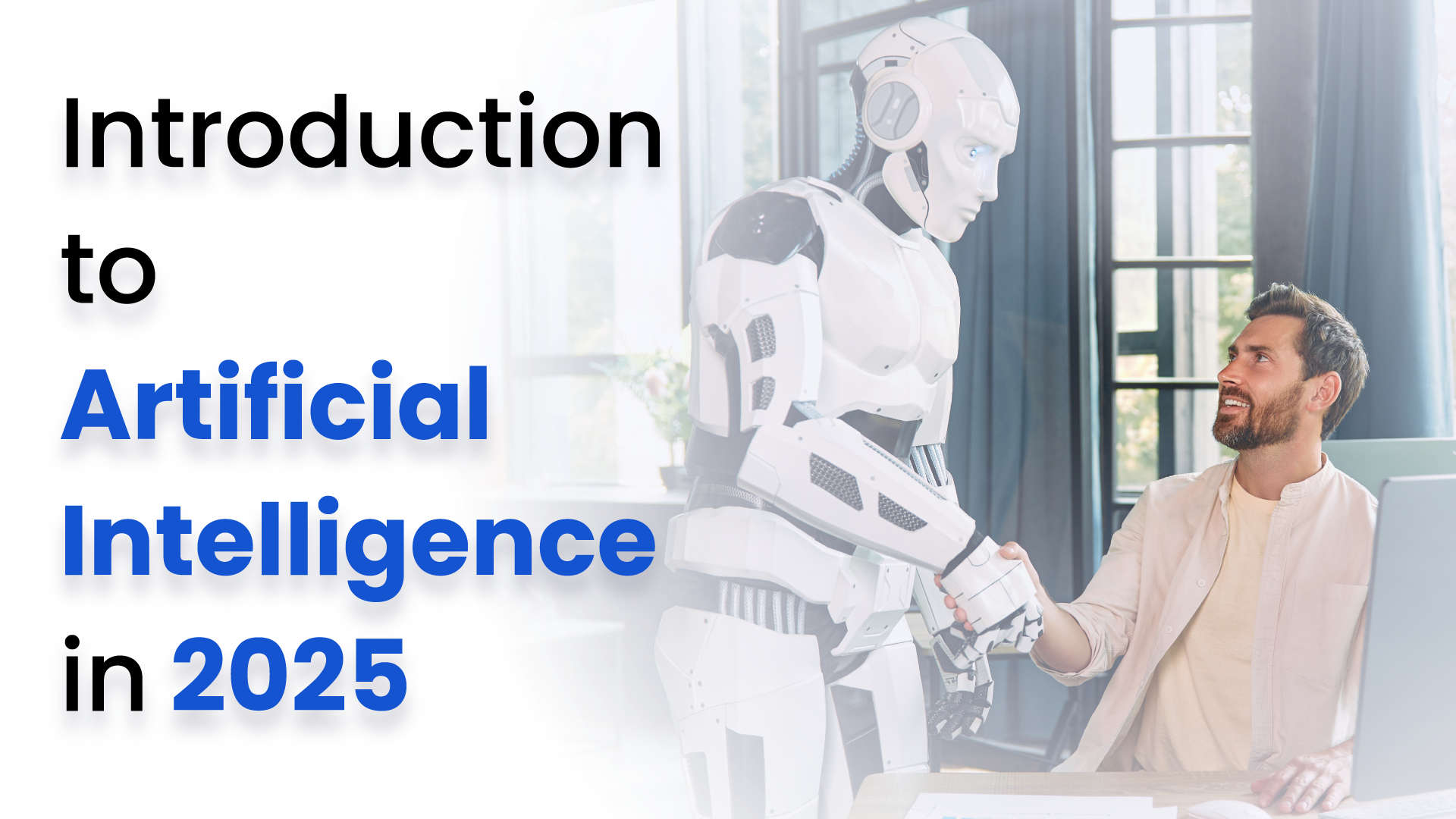
Introduction
Have you ever wondered what it would be like to have your very own Jarvis, like Tony Stark in Iron Man, or an advanced AI system like Samantha in Her that can understand and converse with you on a deeply personal level? These are exactly what comes to mind when we think about Artificial Intelligence.
That brings us to the question: What is AI?
Artificial Intelligence or AI refers to the simulation of human intelligence in machines, where they replicate human intelligence for tasks like learning, reasoning, problem-solving, and more. These systems imitate human cognition to process data, identify patterns, and autonomously make decisions.
Just like the iconic characters in movies, AI strives to make machines think and reason like us, pushing the boundaries of technology and reshaping the way we interact with machines.
But what lies beneath the surface of AI’s apparent magic? How does it interpret human speech, identify patterns, and make eerily human-like decisions?
In the upcoming sections, we will give you an introduction to Artificial Intelligence, delve into the intricacies of AI categories, examine the types that shape its landscape, navigate through their vast subfields, uncover their unique contributions and potential, and much much more.
Let’s take the first step into this exciting odyssey together.
Table of Contents
- Machine Learning
- Computer Vision
- Natural Language Processing
- Deep Learning
- Robotics
- Fuzzy Logic
- Recommendation Systems
Notable AI Advancements in Recent Years
AI Categories
Artificial Intelligence manifests in intriguing and diverse levels, each holding its own allure and possibilities.
We encounter two distinct categories
- Weak AI
- Strong AI
Imagine it as zooming in to explore the nuances within AI’s diverse landscape. These two levels offer unique perspectives and capabilities, each playing a pivotal role in shaping the future of technology.
Weak AI
Weak AI, also called Narrow AI, encompasses technologies like smart voice assistants, recommendation systems, image recognition, and language translation. It excels at specific tasks, improving our interactions with technology by employing defined rules and advanced algorithms.
Unlike their fictional counterparts, Weak AI mimics human-like intelligence for targeted purposes without broad understanding. It uses rules and training data to perform accurately.
For example, Samsung’s Bixby and Microsoft’s Cortana are convenient voice assistants. Weak AI’s image recognition identifies objects, and language translation tools break down language barriers adeptly.
Although specialized, Weak AI’s impact is extensive, simplifying tasks, enhancing user experiences, and transforming industries. Knowing its abilities and limits is vital as we venture into AI’s exciting realms, driving future advancements in this ever-evolving field.
Strong AI
Diving into the realm of Strong AI, also known as Artificial General Intelligence (AGI), we aim to create machines with human-like understanding, learning, and knowledge abilities. While it’s currently theoretical due to research and computing limits, Strong AI represents human-level intelligent machines.
Imagine a world where machines excel in chess, compose music, grasp science, and have meaningful human-like conversations. Strong AI aims to surpass Narrow AI by comprehending complex concepts, adapting to new situations, and creative problem-solving, mirroring human intellect. This dream equips machines with diverse cognitive abilities, reshaping industries, research, and human-machine connections.
However, achieving Strong AI is challenging. Human-level intelligence in machines faces significant obstacles like complex cognition and computational power. Ethics are crucial. Job security, moral responsibility, biases, fairness, security, and privacy must be addressed. Collaboration across disciplines is vital. Guidelines, regulations, and best practices ensure responsible development, maximizing benefits and preventing AI apocalypse scenarios.
From the remarkable convenience of voice assistants and recommendation systems to the visionary potential of machines that might one day rival human intelligence, the field of AI continues to be a source of awe and inspiration.
Types of Artificial Intelligence
Did you know that AI comes in different forms? In this section, we will explore four types of AI, each boasting its unique level of sophistication and capabilities. So, let’s dive right in and uncover the fascinating nuances of AI’s diverse form. Let’s get to it!
Reactive Machines
We’ll kick things off with Reactive Machines. They are the fundamental level that produces specific outputs based on inputs. These machines consistently yield the same output, lacking memory or the ability to learn from experiences.
An example of Reactive Machines is Deep Blue, the IBM supercomputer that made history by defeating Chess grandmaster Garry Kasparov in 1997. Deep Blue’s prowess in playing Chess was remarkable, yet it could not learn from its past games or anticipate future moves; it solely relied on its programmed algorithms to make each move.
(Credits: Peter Morgan/Reuters)
Reactive AI generates personalized recommendations on platforms like Netflix called Recommendation Systems, which use our preferences to suggest tailored movie or TV options.
Reactive AI also plays a vital role in tackling spam and phishing emails. Spam filters, utilizing reactive AI, effectively shield our inboxes from unwanted messages, contributing to a safer online environment.
Although less prevalent now, Reactive Machines were pivotal in AI’s history, paving the way for more advanced technologies and expanding AI’s possibilities.
Limited Memory
The year 2012 marked a turning point in AI with the emergence of Deep Learning. These algorithms, inspired by the human brain’s intricate functions, mimic neuron interactions to learn from past data and make informed decisions for the future. With increasing data input, these models continuously enhance their proficiency. What distinguishes Deep Learning from Reactive AI is its capacity to extract significant data characteristics, progressively refining its performance.
DeepMind’s AlphaStar, a gaming supercomputer, gained fame in 2018 for achieving a remarkable 5-0 victory against Grzegorz “MaNa” Komincz in StarCraft. Despite concerns of unfair advantage, it was transitioned to a newer model and reached the grandmaster level by August 2019.
(Source: Deepmind)
Limited Memory AI also finds use in autonomous vehicles, intelligently analyzing road elements, including lanes, signals, vehicles, curves, and signs, highlighting its impressive capabilities.
While Limited AI is still limited, no pun intended, it is currently the most widely used form of AI, driving remarkable advancements and transforming industries. As technology continues to evolve, we can expect even more astonishing breakthroughs in the realm of Artificial Intelligence.
Theory of Mind
In this section, we explore the concept of the “Theory of Mind,” a subset delving into the emotional facet of the human mind. Unlike other AI, focusing on concepts, Theory of Mind, or Artificial Emotional Intelligence (AEI) spotlights the emotional link that defines humanity.
Did you know the Theory of Mind is derived from Psychology?
Picture AI systems evaluating emotions and human-like responses. Just as emotional intelligence matters in human interaction, The Theory of Mind empowers machines to grasp and address emotions.
A remarkable example of this aspect of AI can be witnessed in humanoid robots like Sophia, developed by Hanson Robotics in Hong Kong and released in 2016. With its human-like appearance, Sophia engages in conversations based on predefined topics and even exhibits a few facial gestures.
(Source: Instagram)
Though Theory of Mind AI is in its early stages, its potential to enhance human-machine ties is vast. Machines grasping emotions opens new possibilities for empathetic AI roles. Technological advancements promise to transform how we interact with machines, enabling a deeper emotional connection and enriching our AI experiences.
Self Awareness
The pinnacle of AI advancement lies in Self-Awareness – the capability for an AI system to possess a consciousness and an understanding of its existence.
Self-Awareness goes beyond mere emotions or characteristics; it delves into the realm of machines being aware of themselves and their existence. Much like the Theory of Mind concept, achieving AI Self-Awareness is beyond reach due to resource and hardware limitations.
While this level of AI remains predominantly in science fiction, it represents the ultimate aspiration for AI researchers. The implications of self-aware AI are profound, with potential impacts on the future of technology and society.
As we explore the possibilities and challenges in this fascinating subfield, we can only imagine the future of AI and its potential transformations to our understanding of intelligence and consciousness.
Subfields of AI
In this section, we’ll look into the subfields of Artificial Intelligence that represent unique facets of its capabilities. So, let’s delve into the intricacies of each subfield and unravel the marvels that AI has in store for us!
Machine Learning
Machine Learning, a pivotal AI subfield, empowers machines to learn from data, unveil patterns, and make predictions through algorithms and mathematical methods.
There are different categories of Machine Learning algorithms, each with a unique way of learning from data. Let’s explore the main ones:
Supervised Learning
Supervised Learning algorithms use labeled data to learn and predict outcomes. The algorithm becomes skilled at foreseeing unfamiliar data through paired examples, where inputs are linked to correct labels. Two key types of supervised learning are:
- Regression: It predicts continuous values, for example, house prices based on features.
- Classification: It is used for categorizing outputs, for example, labeling emails as spam or not based on content.
Unsupervised Learning
Unsupervised Learning doesn’t use labeled data for training. Instead, it finds patterns in unlabeled data, revealing hidden relationships. It’s great when labels are missing. They can be classified into:
- Clustering: Groups similar data points to spot segments, aiding insights and decisions.
- Association: Finds links between variables in big datasets, useful in market analysis for identifying frequently bought together items.
Reinforcement Learning
Reinforcement Learning enables an agent to learn by interacting with its environment, receiving rewards or penalties for actions, and improving decision-making through trial and error.
Artificial Intelligence encompasses various categories of algorithms, with Machine Learning being a crucial subfield. Supervised, Unsupervised, and Reinforcement Learning each serve different purposes and have their strengths in different applications.
Computer Vision
Computer Vision is a mesmerizing subfield of artificial intelligence that endows machines with the remarkable ability to see and interpret the visual world around us! Through a series of intricate processes, Computer Vision enables computers to analyze, understand, and extract valuable information from images and videos.
At its core, this technology utilizes a range of algorithms, from basic image processing to advanced deep learning models. Let us look at some of the processes involved.
- Image preprocessing enhances and transforms images for clarity
- Feature extraction identifies distinctive patterns
- ML algorithms, including Deep Learning, analyze datasets to teach computers object recognition
- Neural Networks with multiple layers learn from extensive data, enabling accurate pattern recognition and adaptation
From smart surveillance systems to entertainment and gaming, this cutting-edge technology continues to revolutionize countless domains.
Explore the realm of Computer Vision with our Free OpenCV Bootcamp.
Natural Language Processing
Natural Language Processing, or NLP, has gained immense popularity in the realm of AI in recent years.
So, what exactly is NLP?
NLP enables machines to understand and mimic human language, powering voice recognition tools like Alexa, Bixby, Cortana, and Siri.
You’ve probably experienced the power of NLP without even realizing it!
Have you ever wondered how your email service knows to filter out spam or fraudulent messages?
That’s NLP in action, analyzing the content to keep your inbox safe and clutter-free. Social media platforms like Twitter also employ NLP to monitor and prevent the use of forbidden language in Tweets, ensuring a safer online environment.
It doesn’t end there. Online shopping giants like Amazon utilize NLP to optimize their customer feedback system, making your shopping experience smoother and more enjoyable. When you search for information on Google, NLP comes into play to understand your query and fetch relevant web pages by analyzing their content.
The journey of NLP doesn’t stop here. AI systems are learning to comprehend human inputs more effectively than ever before. The future of NLP is incredibly promising as it continues to bridge the gap between human language and artificial intelligence.
Deep Learning
Now, Deep Learning might sound a bit intimidating, but fear not! Let me break it down for you.
Picture a Deep Learning network as a series of interconnected layers, just like a stack of pancakes! Who doesn’t love pancakes?
The top is the input layer, where data enters. Hidden layers, like secret ingredients, add flavors as data flows through. At the bottom, the output layer combines these flavors to make predictions. Just as pancakes delight with layers, so does Deep Learning!
See? Understanding deep learning isn’t as tricky as flipping pancakes!
“Deep” in Deep Learning refers to the number of layers. The deeper the network – in other words, the more layers it has – the better it becomes at handling complex tasks it’s trained for. Deep Learning’s remarkable capability lies in its capacity to get valuable insights from massive datasets, addressing challenges too intricate for humans.
The applications of Deep Learning are incredibly diverse and awe-inspiring. Imagine computers can see and understand the world, or how about speech recognition, where AI can comprehend and interpret every aspect of human speech?
These exciting possibilities have turned Deep Learning into a multi-billion dollar market. Its boundless potential for optimization and problem-solving has captured the attention of industries worldwide.
Robotics
Robots, also known as Physical AI, is a captivating branch of Artificial Intelligence that merges AI technology with tangible forms. These machines excel at automating tasks, offering remarkable versatility. Unlike conventional AI systems built on algorithms, Physical AI takes shape as tangible devices.
These AI-powered machines find roles across industries, revolutionizing how we handle monotonous, hazardous tasks. Industrial settings prominently feature robots, streamlining manufacturing with precision and accuracy, easing labor-intensive tasks.
The military harnesses robotic power too, proving invaluable in various operations. Unmanned Aerial and Ground Vehicles and Explosive Ordinance Disposal robots operate tirelessly, minimizing risk to human lives.
Let’s look at Explosive Ordinance Disposal robots (EODs) as an illustration. These specialized robots are integrated into bomb detection systems, capable of identifying and disarming traps, explosives, landmines, and even fireworks. Their precision and ability to handle dangerous tasks with finesse make them invaluable assets in safeguarding human lives and maintaining public safety.
(Source: Westminster)
Despite benefits, addressing concerns raised by experts is crucial. As we embrace advanced AI, the ethical implications of AI-powered weapons must be managed carefully.
Robotics presents an exciting AI frontier. These machines are not just abstract algorithms; they come to life as tangible, functional tools that improve our lives in numerous ways.
Fuzzy Logic
In the dynamic realm of AI, an intriguing element called “Fuzzy Logic” stands out. Let’s explore its essence and how it contrasts with the traditional Boolean logic that fuels most modern computers.
It confronts vagueness and uncertainty head-on. Instead of being confined to a rigid True or False framework, it delves into the concept of “degree of truth.” Why limit ourselves to binary options when real-life situations often exist in gray areas? Fuzzy logic acknowledges this reality and embraces partial truths instead of absolute conclusions. It mirrors human thinking, offering a compelling strategy for addressing complex problems.
(Source: Wikipedia)
Imagine it as a language that welcomes uncertainty, allowing us to convey ideas and choices with more nuance. While it retains the binary foundations of 0 and 1, Fuzzy Logic acknowledges and incorporates intermediate truth levels, mirroring our perception of the world.
A standout trait of Fuzzy Logic is its user-friendly implementation. Its simple language makes coding straightforward. As with any AI technology, rigorous testing and validation are crucial to ensure precision and dependability.
Fuzzy Logic finds diverse practical uses. It is invaluable for quantitative analysis, serving domains like business decision-making, aerospace engineering, and industrial processes.
By accounting for uncertainties and emulating human-like reasoning, Fuzzy Logic paves the way for innovative solutions to intricate challenges.
Recommendation Systems
Have you ever wondered how Netflix magically suggests your next favorite show or how Amazon knows exactly what you want to buy? Well, all thanks to the marvel of AI, specifically Recommendation Systems.
Recommendation Systems, also known as Recommender Systems, are powerful machine learning models that work behind the scenes to offer personalized suggestions based on your demographics, past purchases, interests, products you’ve shown interest in, added to your cart, and even reviews you’ve provided.
(Source: StartupTalky)
These systems can be broadly classified into three categories, each with its unique approach:
- Content Filtering: It studies products you engaged with, like purchases and cart items, suggesting similar items fitting your taste.
- Collaborative Filtering: This approach examines other users’ behavior with shared interests, not needing your demographics. For instance, if you buy a phone, it suggests accessories others found useful.
- Hybrid Filtering: Overcoming the limits of the above methods, this combines their strengths. Predictions from both are merged for more accurate recommendations.
Recommender Systems are the secret sauce behind those uncannily accurate recommendations you receive from your favorite platforms. They make our online experiences more enjoyable and convenient, saving us time and helping us discover exciting new content and products.
Now that you have a better grasp on the subfields of AI, you can also check out our Comprehensive Guide to the different AI Job Roles.
Applications of AI
Artificial Intelligence, or AI, has emerged as a game-changer in various fields, with real-world applications that continue to revolutionize our lives. Let’s delve into some exciting areas where AI has significantly impacted.
Healthcare
Artificial intelligence has revolutionized healthcare by transforming diagnosis, treatment, and patient monitoring. This integration has created smarter and faster healthcare systems worldwide. Notably, AI’s ability to analyze vast clinical data aids experts in extracting insights, identifying patterns, and making accurate conclusions.
Linus Health stands out as an AI-powered healthcare example. This digital cognitive assessment platform aims to detect brain health issues in the early stages. Analyzing 50+ metrics, it assesses cognitive function, spotting signs of impairment. With 55 million global Dementia patients, this tech can potentially impact early diagnosis and care.
Smart Wearables
Smart wearables have taken the AI ecosystem by storm, becoming an inseparable part of our daily lives. While the concept of smart wearables traces back to the 1980s with hearing aids, the technology has evolved exponentially, finding applications in various industries, like gaming, sports, and fitness.
In the fitness sphere, AI-backed trackers revolutionize health monitoring. These wearables use biosensors for monitoring heart rate, calories, and more. Smart headphones is another smart wearable. They guide workouts with cues and countdowns, similar to having your very own personal trainer but in your ears.
AI extends beyond fitness to retail. The Levi’s Commuter Trucker Jacket with Google’s Jacquard tech stands out. Developed over two years, it integrates touch-sensitive fabric and a “smart tag.” Notably, its advanced features might fade after ten washes—important when wearing this stylish tech jacket.
The rapid evolution of AI technology is set to make smart wearables an everyday norm, enhancing various aspects of our lives.
Self-driving Cars
One of the most awe-inspiring milestones in the AI field is the development of autonomous vehicles.
Utilizing advanced Neural Networks, they analyze various data, ensuring secure and efficient travel by processing information on road layouts, pedestrian movement, and vehicle dynamics. The real magic unfolds as this data is inputted into deep learning algorithms, acting as the driving brains, comprehending lane changes, traffic signs, road curves, and conditions for a smooth journey.
Tesla and Google (Waymo) have successfully introduced real-world autonomous driving systems, where AI’s predictive modeling enables self-driving cars to anticipate and make safe decisions amidst traffic.
Imagine stepping into one of these smart cars and conversing with it. Some vehicles have voice recognition technology that can take inputs from the passengers and respond accordingly, making the whole driving experience feel more like having a friendly chat with your car!
The applications of AI in autonomous vehicles extend beyond convenience and cool-factor. They have the potential to revolutionize transportation, making it safer, more efficient, and accessible to all.
Gaming
Gaming started decades ago with classics like Mario Bros. and Pacman. Fast forward to today, and we are introduced to Virtual Reality (VR) and Augmented Reality (AR). They offer lifelike adventures through VR headsets, from conquering fears on virtual roller coasters to exploring spooky mansions.
But what makes these virtual worlds truly engaging are the intelligent NPCs, also called Non-Player Characters. They mimic human players while also evolving the challenges as you advance, ensuring an engaging experience.
In gaming, storytelling is crucial for captivating experiences, but crafting complex narratives takes time. Procedural storytelling or AI procedural generation is an innovative method that creates dynamic game stories and content. This ensures each playthrough offers a unique, evolving experience through algorithms and rules.
Thanks to AI, we now have the power to take our gaming experiences to new heights.
Social Media
Instagram and Snapchat filters! We’ve all marveled at those fancy filters that transform our faces with a single tap. These filters are powered by Augmented Reality (AR), enhancing visual Social Media platforms like Snapchat and Instagram.
With AR filters, you can watch your face change in real time as digital masks are overlaid on your moving features. Have you ever wondered how those beauty filters work?
The answer lies in Augmented Reality Beauty filters or ARB filters. These innovative filters not only conform to current beauty ideals but also adapt to your facial features in real-time, creating a unique and personalized digital beautifying process.
We could touch upon only a few applications of AI due to the sheer vastness of the subject. We’ll cover more applications in our upcoming blogs, so stay tuned for that!
Notable AI Advancements in Recent Years
AI has been making significant strides in recent years, revolutionizing the way we interact with technology and the world around us. Let’s delve into some remarkable advancements that have caught our attention and enriched our lives. Let us take a look at a few of them.
AI Assistants
Chances are, you’re already familiar with AI assistants like Amazon’s Alexa and Apple’s Siri. These digital companions have revolutionized how we organize our lives, manage tasks, and stay on top of our busy schedules.
AI assistants have made significant strides recently, largely thanks to Natural Language Processing (NLP). This progress renders them indispensable in our daily lives. They’ve sharpened their language generation and speech recognition skills through dedicated research and development. This improvement enables them to comprehend queries and commands effectively, resulting in natural interactions.
They now offer heightened precision and responsiveness. Whether you seek quick trivia answers, need to schedule an essential event, jot down notes, play your favorite tunes, or simply keep you informed, AI assistants are here to make them a seamless experience!
ChatGPT
In November 2022, OpenAI’s ingenious minds introduced ChatGPT to us. ChatGPT is a comprehensive chatbot crafting diverse and captivating content from articles and emails to social media posts and code snippets, all tailored to your input.
What distinguishes ChatGPT is its continuous pursuit of improvement through reinforcement learning and valuable human feedback, delivering accurate, customized, and useful information.
The versatility of ChatGPT knows no bounds, making it a remarkable tool for numerous applications across various domains. Whether you’re seeking assistance with creative writing, coding conundrums, or simply looking for a virtual companion to engage in thought-provoking conversations, ChatGPT is ready to lend a digital hand.
Tesla
Tesla has become synonymous with cutting-edge advancements in autonomous driving systems. With an impressive fleet of over 400,000 cars worldwide, Tesla is at the forefront of the autonomous vehicle market. Leveraging Big Data and Artificial Intelligence, Tesla aims to achieve fully autonomous driving capabilities.
Tesla’s Full Self Driving (FSD) system utilizes data from eight cameras to create a 3D representation of the environment, including lanes, roads, obstacles, road signs, and traffic lights. This real-time data is processed by AI algorithms, enabling vehicles to make intelligent driving decisions with minimal human intervention. The continuous learning process ensures that Tesla’s AI system keeps evolving and becoming even safer and more efficient.
Humanoid
AI has led to incredible strides in humanoid robotics, showcasing science-fiction-like capabilities in performing diverse tasks. Let us look at some of them.
Nadine is a humanoid designed with personality, emotions, and an impressive memory. She can recognize and greet individuals based on previous conversations, making her interactions surprisingly human-like. Equipped with 3D cameras, a microphone, and a webcam, Nadine uses multiple perception layers to analyze gestures and behaviors, allowing her to respond appropriately.
(Source: Wikipedia)
Then there’s Sophia, one of the most advanced humanoid robots to date. Created by Hong Kong-based company Hanson Robotics, Sophia is known for her realistic interactions with humans, making her an incredibly sophisticated companion. Leveraging Neural Networks and AI, Sophia was designed to learn social skills, recognize gestures, behaviors, and faces, and generate contextually appropriate responses.
With their remarkable capabilities and technological prowess, humanoids are poised to reshape industries, redefine human-robot interactions, and unlock unprecedented possibilities.
The Future of AI
As we reach the conclusion of our exploration into the world of AI, one thing is abundantly clear – the future of Artificial Intelligence is an exhilarating frontier that holds unprecedented potential. This technological boom has left an indelible mark across various industries, from Robotics to IoT and Big Data, and there’s no indication of AI slowing down anytime soon.
By bridging the gap between humans and machines, AI has unleashed a new era of communication, data analysis, and problem-solving capabilities. It can reshape entire industries and transform lives in ways we could only imagine before.
Behind the scenes, a complex technical data infrastructure drives AI, and its computational demands make it a costly venture. Despite these challenges, the AI market has seen impressive growth, with a value of $454.12 billion in 2022. Brands worldwide are eager to embrace AI, with 44% planning significant investments to integrate it into their businesses.
But this is just the beginning. The future of AI promises a plethora of possibilities, with no limits to what it can achieve. As technology advances and innovation continues to push boundaries, we can expect extraordinary developments in the realm of Artificial Intelligence.
The journey of AI is far from over; in fact, it’s just getting started. Stay tuned for more incredible blog posts in this fascinating and ever-evolving field!
See you guys in the next one!
Cheers


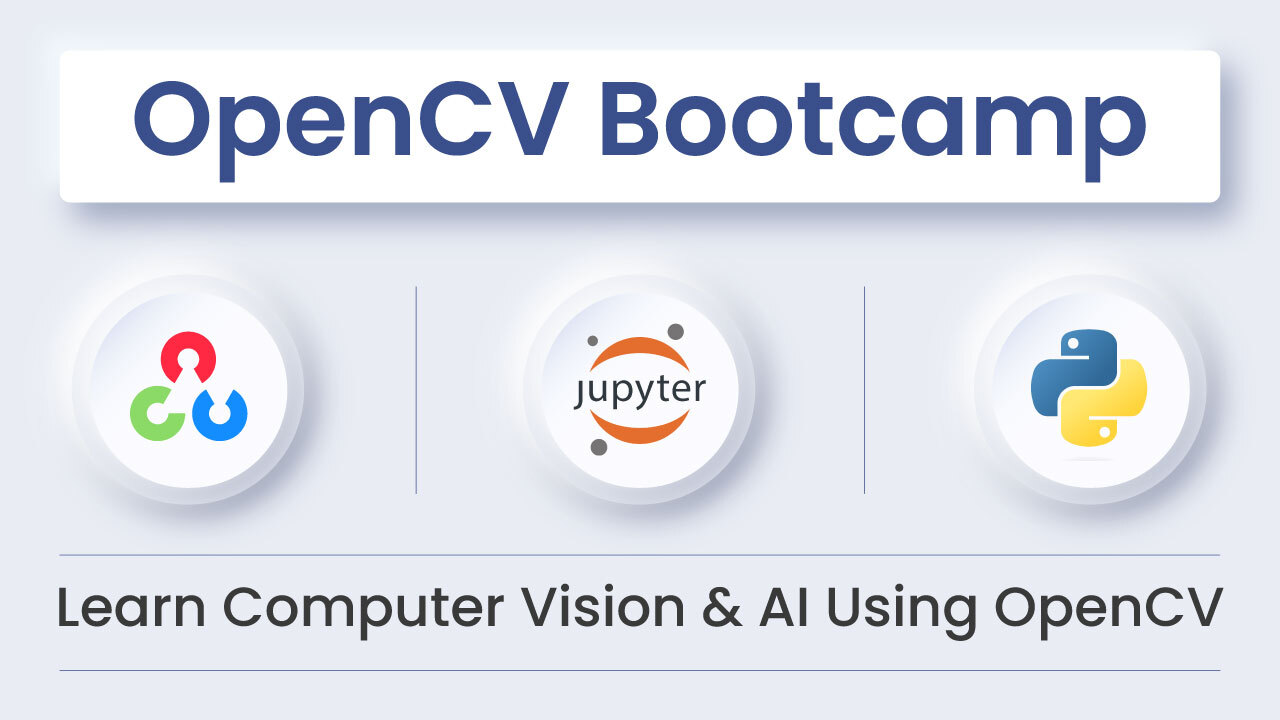
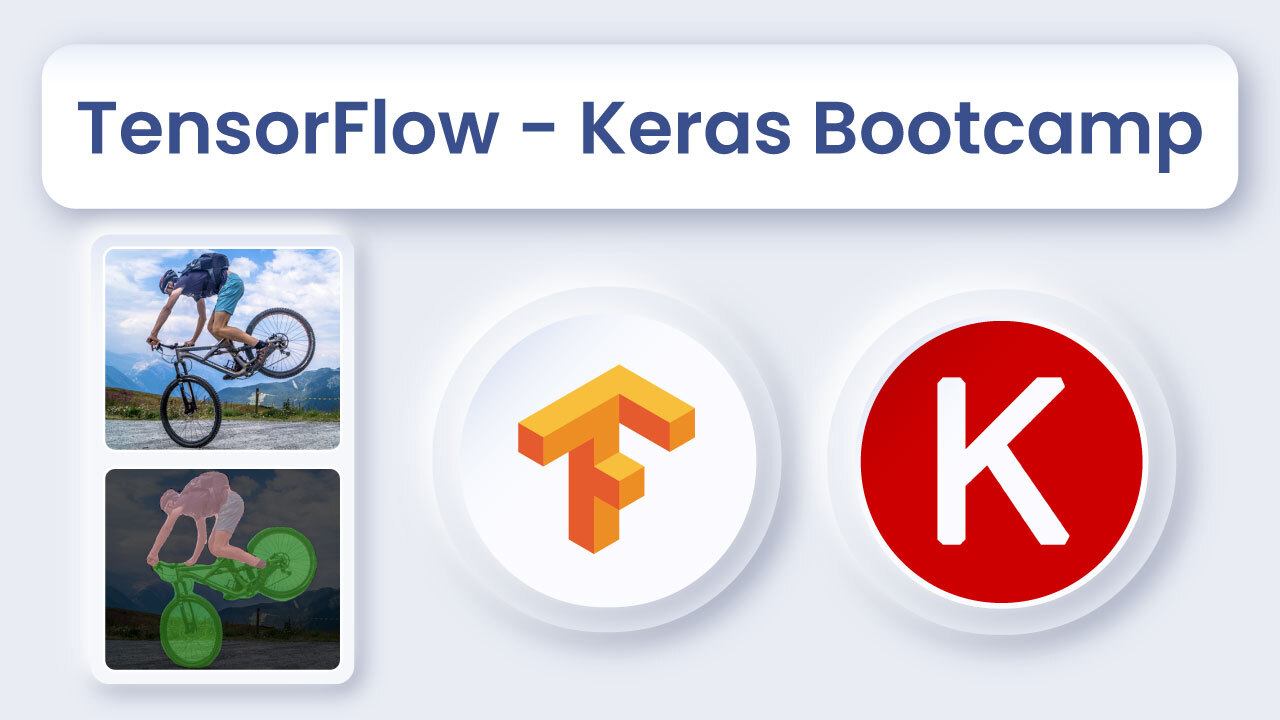



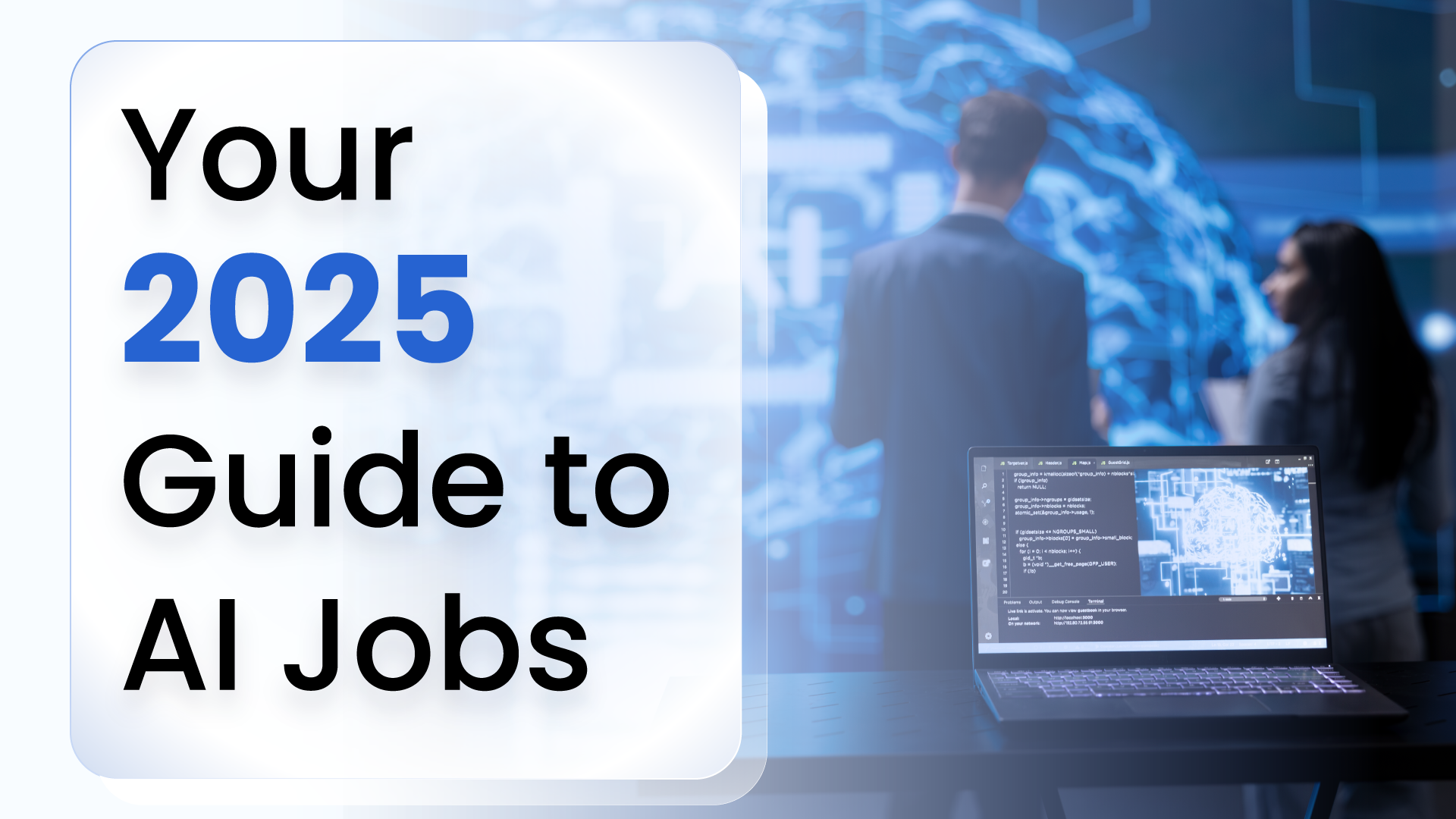
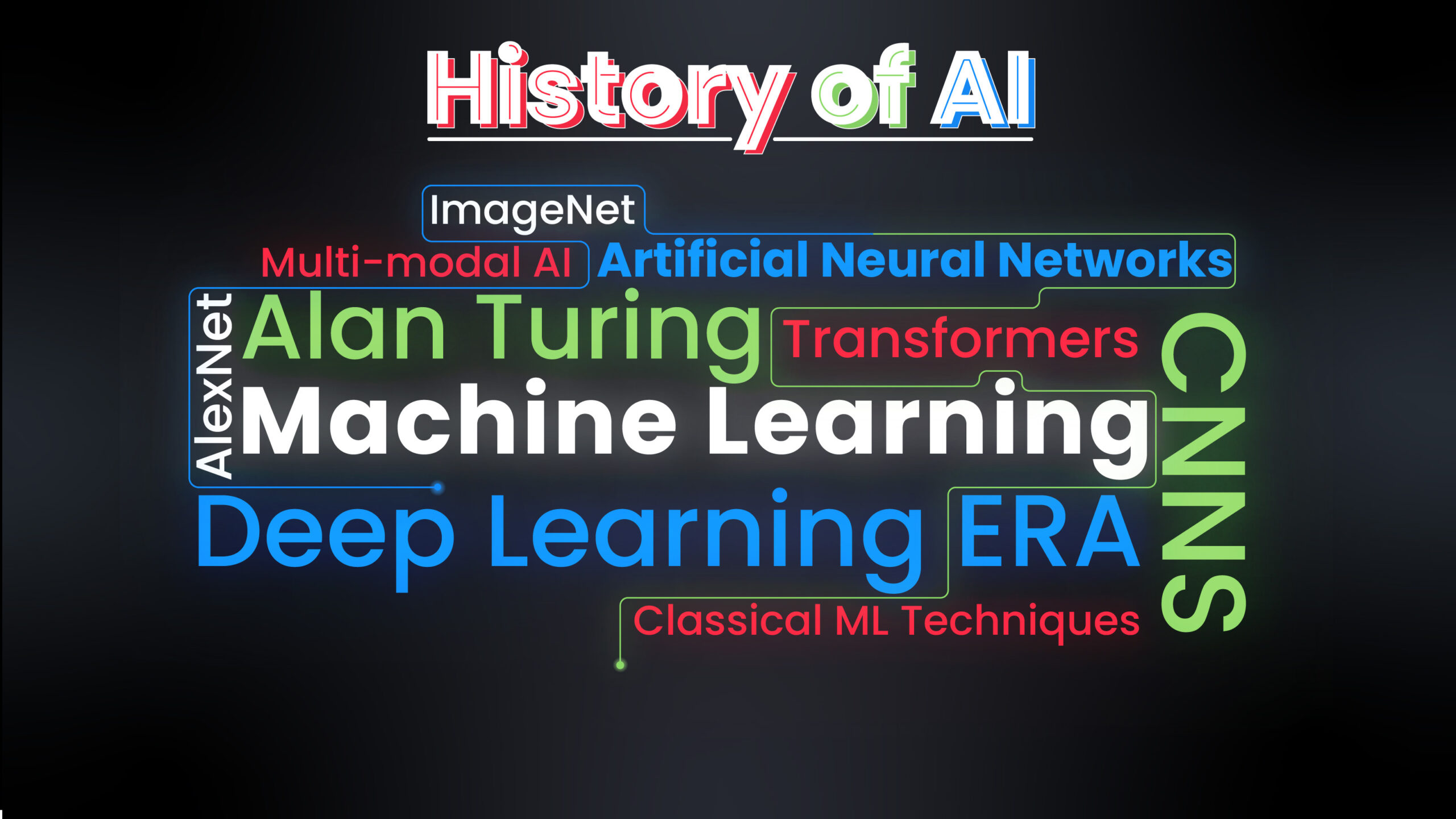
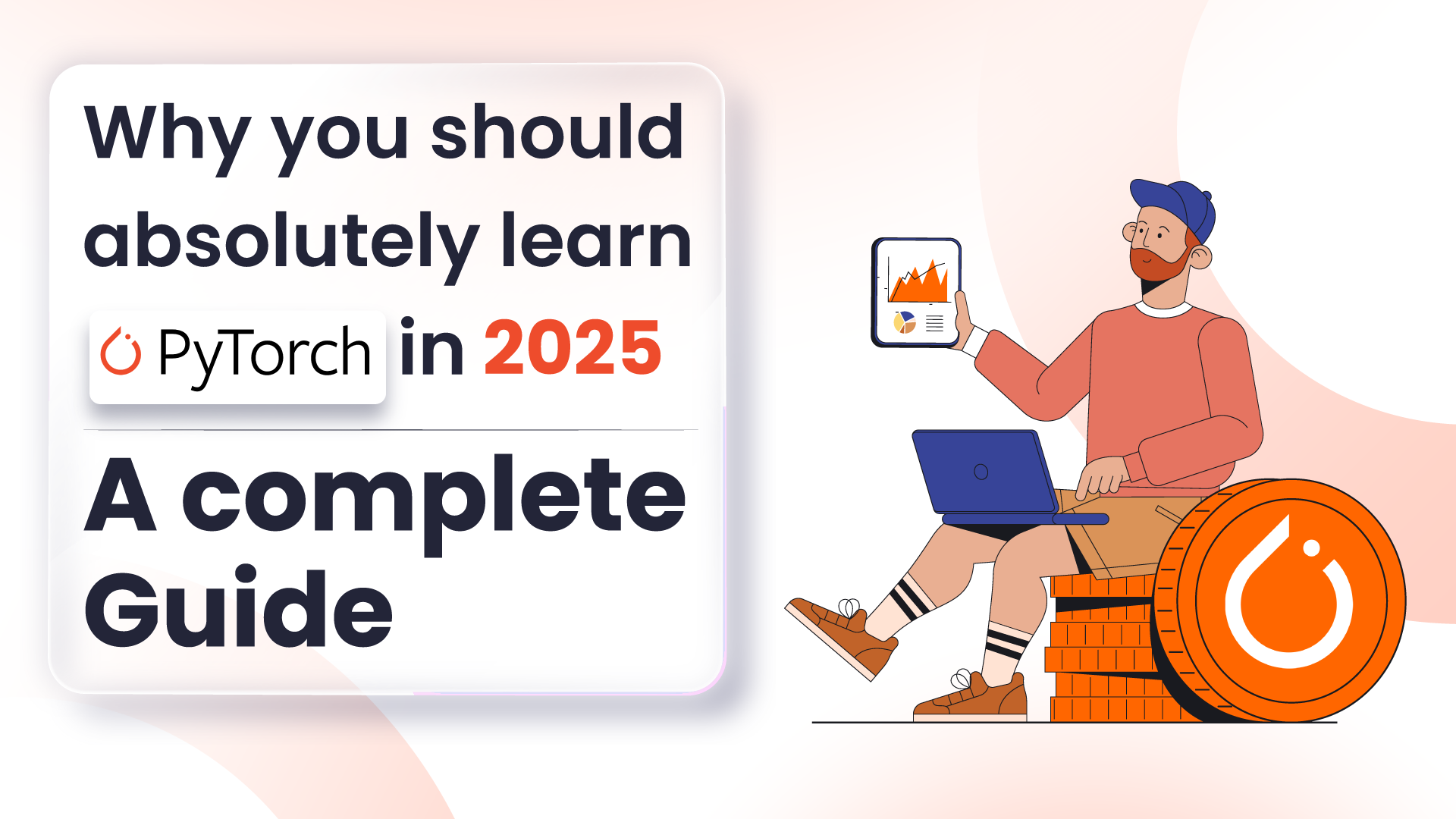

5K+ Learners
Join Free VLM Bootcamp3 Hours of Learning